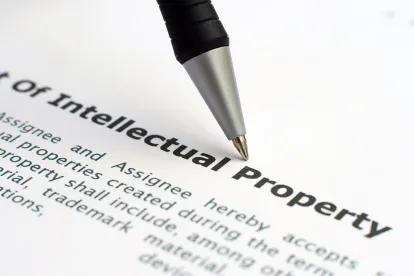The US Court of Appeals for the Federal Circuit reversed a district court’s claim construction, explaining that the use of a restrictive term in a definition in an earlier application does not reinstate that term in a later patent that purposely deletes the term, even if the earlier patent is incorporated by reference. Finjan LLC v. ESET, LLC, Case No. 21-2093 (Fed. Cir. Nov. 1, 2022) (Prost, Reyna, Taranto, JJ.)
Finjan filed a lawsuit against ESET for infringement of five patents directed to systems and methods for detecting computer viruses in a “downloadable” through a security profile. Each of the asserted patents was part of the same family, and each claimed priority to the same provisional application. The term “downloadable” appeared in the claims of all the asserted patents but was defined slightly differently in the various patents in the family. The original provisional application defined “downloadable” as “an executable application program which is automatically downloaded from a source computer and run on the destination computer.” Two of the non-asserted patents in the family defined “downloadable” as “applets” and as “a small executable or interpretable application program which is downloaded from a source computer and run on a destination computer.” Two of the asserted patents defined “downloadable” as “an executable application program, which is downloaded from a source computer and run on the destination computer.” The two asserted patents incorporated by reference one of the non-asserted patents. The other three asserted patents did not include a definition of “downloadable,” but they incorporated by reference one of the asserted patents and one of the non-asserted patents that defined “downloadable.”
The district court construed the term “downloadable” as used in the asserted patents to mean “a small executable or interpretable application program which is downloaded from a source computer and run on a destination computer.” The district court based its construction on the incorporation by reference of one of the non-asserted patents, reasoning that although the patent family contained “somewhat differing definitions,” these definitions “can be reconciled.” In particular, the district court found that based on the definitions and examples included throughout the various patents in the family tree, the term “downloadable” in the asserted patents should be construed to include the word “small” as defined in the non-asserted patent. ESET moved for summary judgment of invalidity due to indefiniteness based on the word “small” as used in the adopted construction of “downloadable.” The district court granted the motion. Finjan appealed.
The Federal Circuit began by reciting the well-known maxim that claims must be read in light of the specification, which includes any patents incorporated by reference since those patents are “effectively part of the host patents as if they were explicitly contained therein.” However, the Court explained that “incorporation by reference does not convert the invention of the incorporated patent into the invention of the host patent.” Instead, the disclosure of the host patent provides context to determine what impact, if any, the patent incorporated by reference will have on the construction of the host patent claims.
Applying these principles, the Federal Circuit found that the district court erred because it viewed the differing definitions throughout the patent family as competing and therefore limited the construction to the most restricted definition of the term. The Court explained that the use of a restrictive term in an earlier application does not reinstate that term in a later patent that purposely deletes the term, even if the earlier patent is incorporated by reference. The Court found that the non-asserted patents, which defined “downloadable” as “small,” represented a subset of the patent family claiming an invention capable of downloading only small executable or interpretable application programs. Crucial to the Court’s analysis was its finding that the definition of “downloadable” in two of the asserted patents did not include a size requirement and therefore referred to executable or interpretable application programs of all sizes, including but not limited to “small.” The Court concluded that these definitions did not compete, but instead could exist in harmony within the patent family. Accordingly, the Court found that “downloadable” as used in the asserted patents meant “an executable or interpretable application program, which is downloaded from a source computer and run on the destination computer.”
Since the Federal Circuit modified the claim construction on which the summary judgment motion was granted, the Court vacated summary judgment and remanded for further proceedings consistent with the new claim construction.




 />i
/>i

